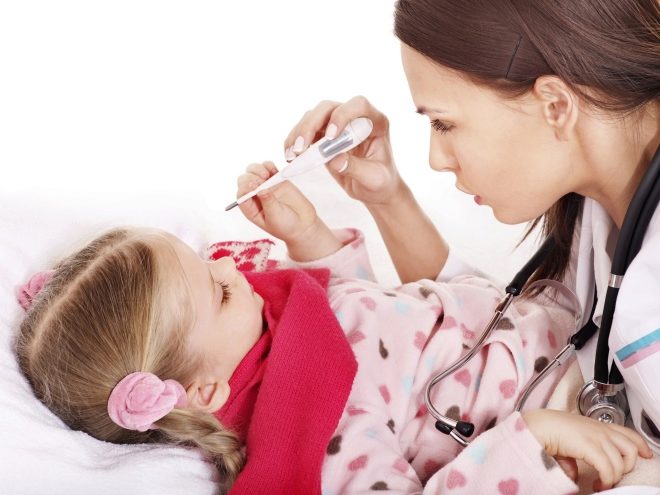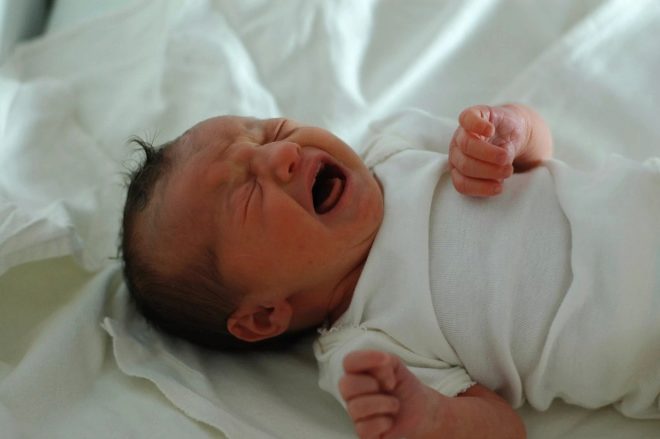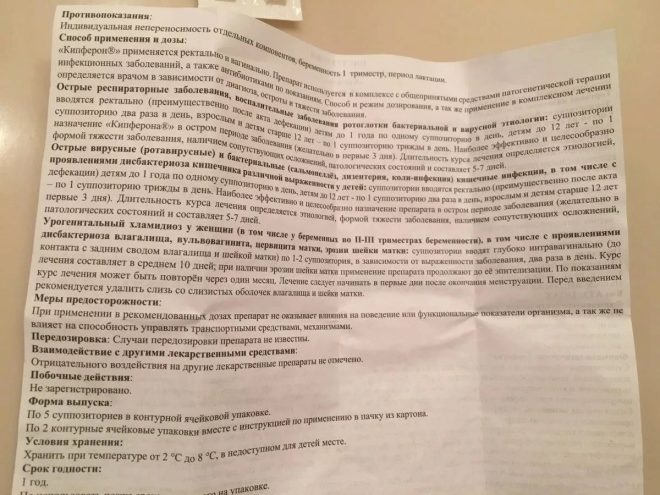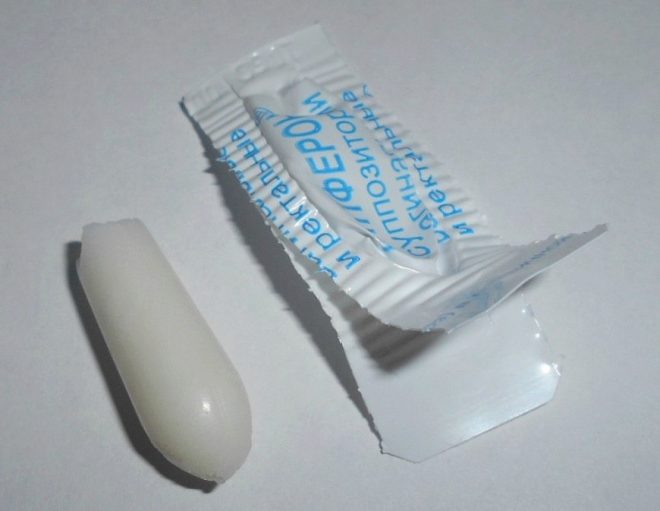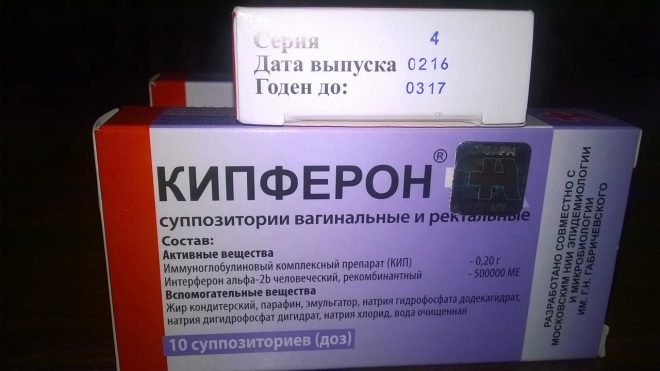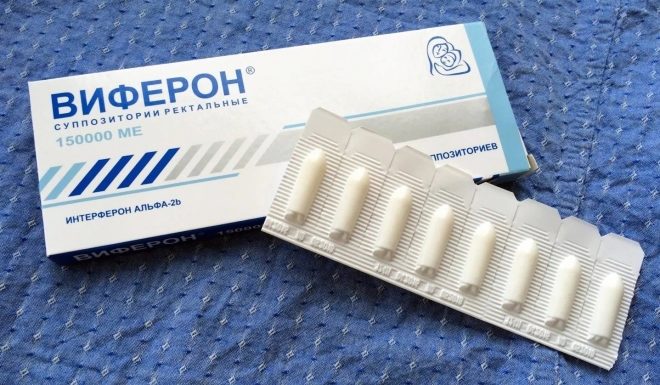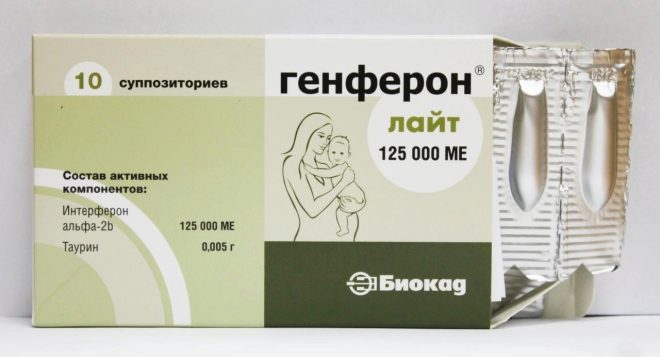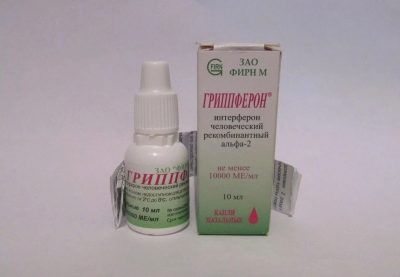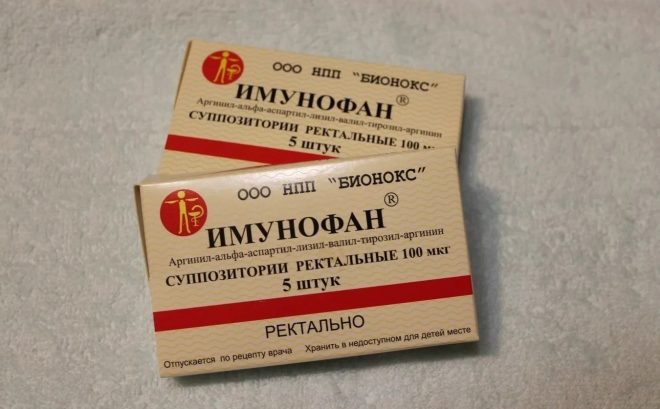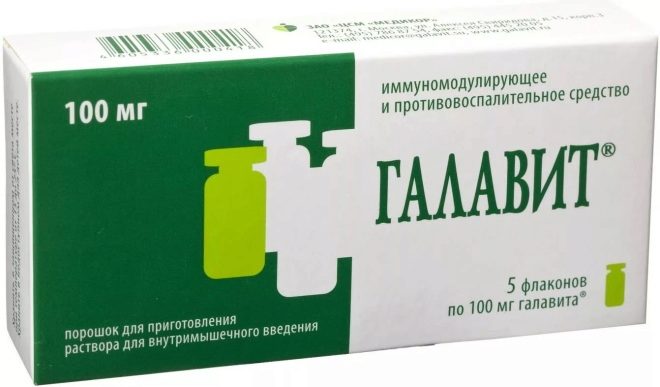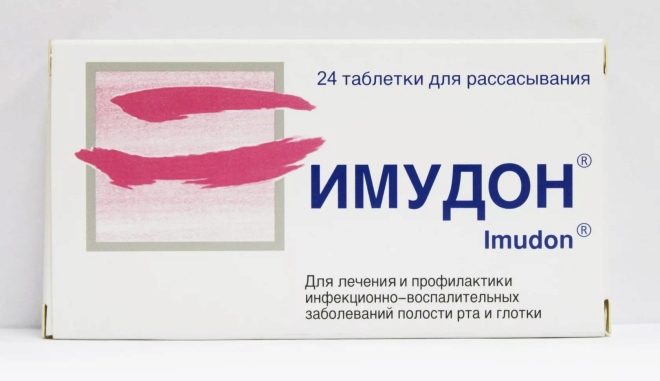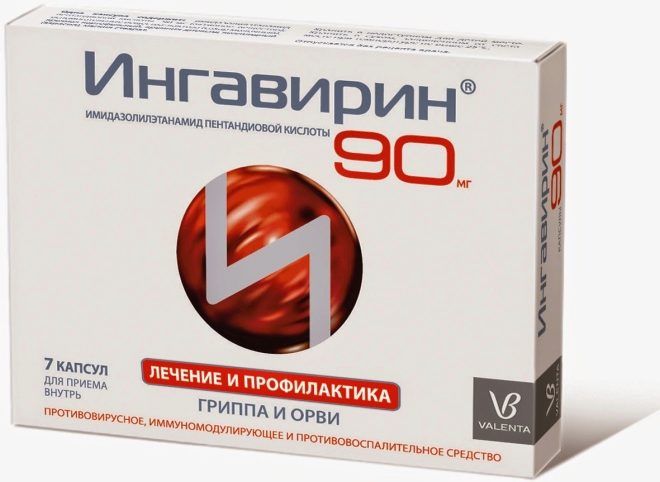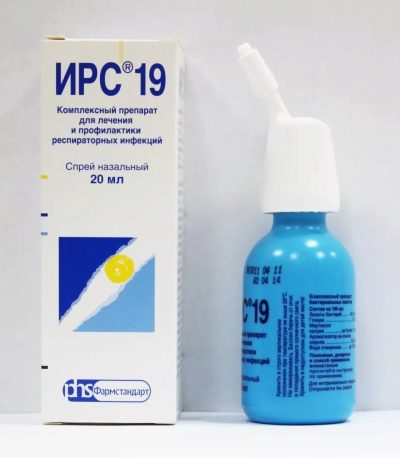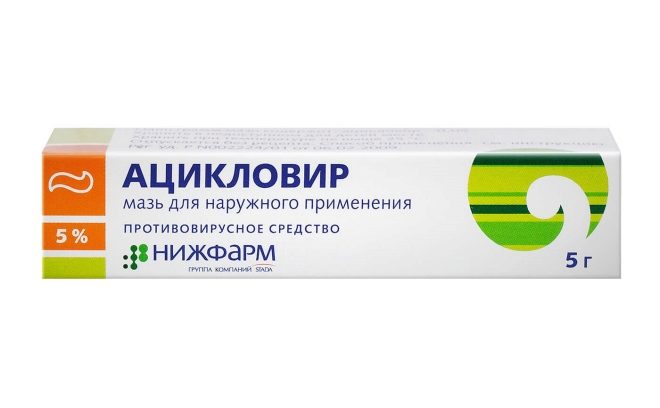Candles "Kipferon" for children
In the treatment of infections caused by viruses, very popular means that have immunomodulatory effects. One of these drugs is Kipferon. Such domestic medicine is added to the complex treatment of various diseases. In what form is it made, is it allowed for use in children and what analogs can it be replaced with?
Release form
Kipferon is available in candles, of which there are 5-10 pieces in one package of medicine. They are white, light beige or yellowish-white, with a specific smell, oblong, and one end of the suppository is pointed. The structure of the candles is homogeneous, but inside there may be a recess or air rod, and the color is marble.
Composition
In Kipferon there are two active substances, one of which is alpha-interferon type 2b. The content of such recombinant human interferon in one candle is 500 thousand international units.
The second active ingredient of suppositories is represented by plasma proteins, including immunoglobulins of types M, G and A. Their concentration in 1 candle is 60 mg. They are called a complex immunoglobulin preparation (abbreviated as KIP), which determines the name of the drug. These proteins are derived from purified donor blood.
Additionally, suppositories include components by which the candles keep their shape, but are quite flexible and quickly dissolve in the gut, and the active substances in them are evenly distributed. Such ingredients are emulsifier, paraffin wax, hydrogen phosphate and sodium dihydrogen phosphate, purified water, special fat and sodium chloride.
How to act?
Due to the presence in the composition of the drug and immunoglobulins, and interferon, suppositories have a pronounced stimulating effect on the human immune system. Kipferon also has antiviral activity, in particular, anti-herpes action.
As a result of the use of such a drug, both innate and acquired immunity is activated, the normal intestinal flora is restored, the activity of immune cells and the production of gamma-interferons are increased.
The drug acts locally - after the administration of the suppository, the immunoglobulins M and A act on the intestinal mucosa, which has a positive effect on local immunity.
Indications
Kipferon is in demand in such situations:
- With acute respiratory disease of different nature - laryngitis, tracheitis, otitis and other pathologies;
- With bacterial or viral infections of the oropharynx;
- With rotavirus and viral hepatitis;
- In case of bacterial intestinal infection manifested by loose stools and vomiting, for example, in case of dysentery, salmonellosis, or infection with pathogenic colibacilli;
- With the flu;
- With intestinal dysbiosis;
- When infected with herpes viruses, for example, with chickenpox or herpes stomatitis;
- With chlamydia.
The drug can also be prescribed for prophylaxis, for example, with frequent acute respiratory viral infections or before a planned surgery.
At what age is it allowed to take?
According to the instructions attached to the candles, Kipferon can be used in a child of any age, even a newborn baby. However, this treatment should be prescribed to young patients by a doctor.
It is not recommended to give any immunostimulating medication to children in the first year of life without consulting a pediatrician.
Contraindications
The only reason to refuse treatment with Kipferon is the intolerance of any component of such suppositories. Other contraindications in the instructions to the candles are missing.
Side effects
In the annotations to the candles, no negative side effects are noted, however, in very rare cases, an allergic reaction to any Kipferon ingredient is possible in a small patient. Allergies can be of varying severity - from a slight itch to severe swelling. In this case, the use of funds immediately cease and in the future can not use candles.
Instructions for use
When prescribing children, Kipferon suppositories are administered only rectally. Manipulation is recommended after defecation.
Dosage and mode of administration depends on the age of the patient:
- For infants of the first year of life, the drug is administered one candle once a day.
- At the age of one to three years, the drug is applied twice in 1 suppository.
- For a child over the age of three, the frequency of insertion of candles can increase up to 3 times per day. One method involves the introduction of a single suppository.
The duration of use for viral infections and dysbiosis usually ranges from 5 days to one week. When infected with bacteria (for example, for purulent tonsillitis), the course of use lasts 7-8 days.
Overdose and drug interactions
Cases of the negative effects of candles in a larger dose than prescribed by a doctor, the manufacturer does not mention. Kipferon can be used in conjunction with many other drugs, for example, in the case of bacterial intestinal damage, it is prescribed with Sumamed, Flemoxin and other antibacterial agents.
Terms of sale
Kipferon can be easily purchased at almost any pharmacy, since it is a non-prescription drug. The average price of 10 suppositories is 550-630 rubles.
Storage conditions and shelf life
The manufacturer recommends storing candles at a temperature within + 2 + 8 degrees Celsius, so it is advisable to keep such a medicine in the refrigerator on the top shelf so that the medicine is inaccessible to children.
The shelf life of the drug is small and is only 12 months. If it expired, treatment with such Kipferon is contraindicated.
Reviews
Kipferon responds differently to treatment, because the effectiveness of such a remedy is judged subjectively, and its effect on the child’s body during use is different, since it depends on the severity of the disease and on the patient’s individual characteristics.
Suppositories help one children and their condition improves in just a few days. Other parents complain about the lack of any positive effect of the drug. The greatest effect of treatment with Kipferon is noted in children who have started to put candles in the first three days of the disease. However, any adverse reactions to the drug are often not mentioned.
Analogs
If necessary, replace Kipferon with other medications that include interferon:
Viferon
The drug is presented candles, ointment and gel. In the form of suppositories, he is appointed even prematurely.
What will tell about this drug experts. Watch the video.
Genferon Light
This medication in candles is used from birth.
Grippferon
It comes in two forms (spray and drop in the nose) and is allowed at any age.
In addition, the child may prescribe other means with similar therapeutic effects for example:
Candles Immunofan
They are allowed from 2 years and are also available as a nasal spray and injection. The drug is used in viral infections and immunodeficiency states.
Galavit
A drug Galavitwhich is represented by suppositories, injections and pills. Children it is prescribed for frequent acute respiratory viral infections, adenoiditis, stomatitis, sore throat and other diseases since 6 years.
Pills Imudon
Due to the presence of bacteria in lysates, this drug helps with stomatitis, tonsillitis and other diseases of the oropharynx. At children's age it is appointed from 3 years.
Ingavirin Capsules
Such antiviral medication is used in children over 7 years old.
IRS19 Nasal Spray
This remedy based on lysates of bacteria is used for coryza, adenoiditis, tonsillitis and other diseases. In pediatrics, it is used from 3 months.
Kagotsel tablets
They are prescribed from the age of three for herpes and flu.
Arbidol
The drug Arbidol containing umifenovir. It is in demand for viral diseases and comes in several forms (suspension, capsules, tablets). Children are discharged from the age of two.
Orvirem Syrup
Syrup Orvirem, which provides rimantadine. This tool is used for influenza in children older than a year.
Tablets Cycloferon
They activate the synthesis of interferon in the patient's body and are used from 4 years.
Drug Acyclovir
Such medicine is produced in different forms (ointment, cream, powder, tablets, etc.) and is prescribed for infection with the herpes virus.
Some parents, instead of Kipferon, decide to treat the child with homeopathic remedies (Ergoferon, Oscillococcinum, Aflubin, Anaferon). However, many pediatricians, among whom is the popular Komarovsky doctor, doubt their effectiveness and warn that they cannot be a full replacement for immunomodulatory and antiviral drugs. In addition, it’s not worthwhile to give the child any means affecting his immune system.

